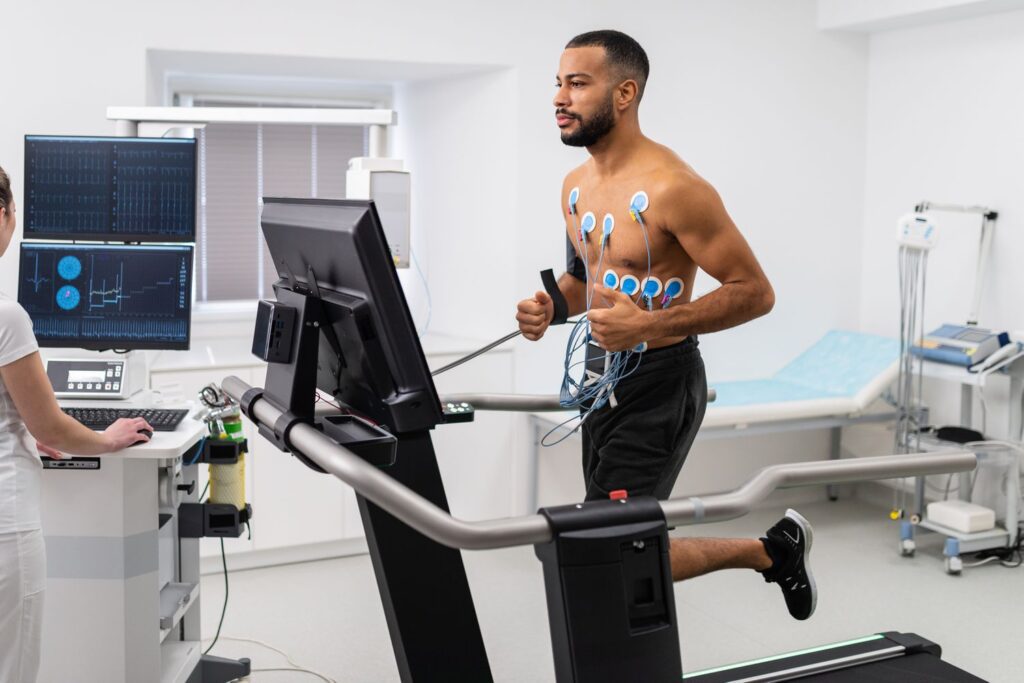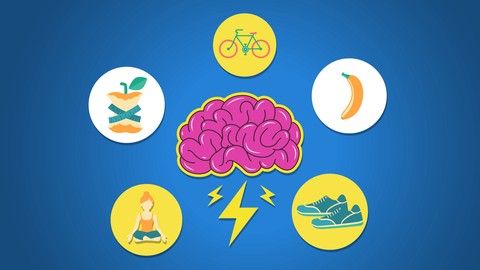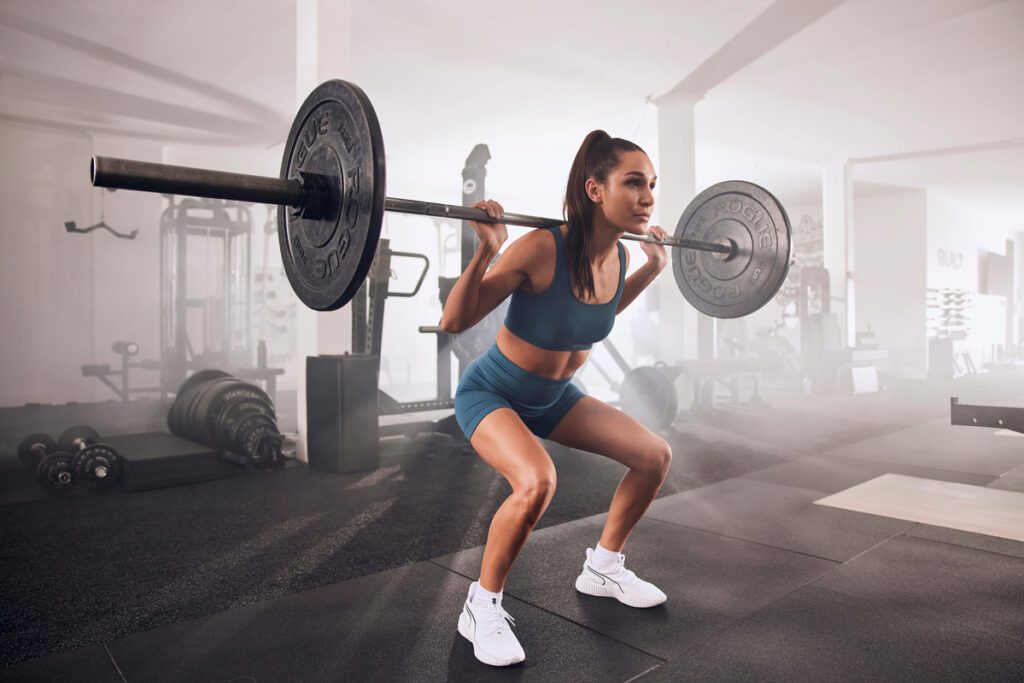In the realm of sports, where the margins between victory and defeat can be razor-thin, athletes seek every advantage to elevate their performance. Beyond the physical aspects of training and competition, the techniques plays a pivotal role in determining success on the field, track, or court. Enter the transformative practice of advance sports training techniques, a mental rehearsal technique that transcends the boundaries of the playing field and delves into the intricacies of the athlete’s psyche.
Biomechanics: The Foundation of Athletic Movement
What is Biomechanics ?
Biomechanics is the study of the mechanical aspects of living organisms, particularly the application of mechanical principles to understand how the body moves, functions, and responds to external forces. In the context of sports training, biomechanics plays a crucial role in optimizing athletic performance by analyzing and enhancing the mechanics of movement.

Role of Biomechanics in Sports Training Techniques
- Movement Analysis: Biomechanics involves the detailed analysis of how athletes move during various activities. This includes studying joint angles, body positions, and the sequencing of movements to identify optimal patterns.
- Force and Motion: Understanding the forces acting on the body and how these forces influence motion is fundamental to biomechanics. This knowledge helps trainers and athletes optimize techniques to generate maximal force efficiently.
- Injury Prevention: Biomechanics aids in identifying movement patterns that may contribute to injuries. By addressing faulty mechanics, trainers can design interventions to reduce the risk of injuries and improve overall safety.
- Performance Optimization: By optimizing movement patterns, biomechanics contributes to enhancing athletic performance. It involves refining techniques to maximize power, speed, and efficiency in executing specific skills relevant to the sport.
- Equipment Design: Biomechanics informs the design of sports equipment, ensuring that gear, such as footwear and sports gear, complements the natural movements of the body. This optimization helps athletes perform at their best while minimizing the risk of injury.
Application of Biomechanics in Sports
- Skill Enhancement: Biomechanics helps identify the most efficient and effective techniques for performing specific skills in a sport. By refining these movements, athletes can improve their overall skill proficiency.
- Training Program Design: Understanding biomechanics allows trainers to tailor training programs to the unique physiological and biomechanical characteristics of individual athletes. This personalized approach maximizes training effectiveness.
- Rehabilitation: In cases of injury, biomechanical analysis aids in designing rehabilitation programs. By addressing faulty movement patterns, athletes can recover from injuries and return to sport with reduced risk of recurrence.
- Performance Assessment: Biomechanical assessments serve as valuable tools for evaluating an athlete’s current performance level. This objective measurement helps set benchmarks, track progress, and identify areas for ongoing improvement.
Neuroplasticity Training: Rewiring the Athlete’s Brain
What is Neuroplasticity ?
Neuroplasticity refers to the brain’s remarkable ability to adapt, reorganize, and form new neural connections in response to experiences, learning, and environmental changes. In the context of sports, neuroplasticity plays a crucial role in shaping an athlete’s abilities, influencing skill acquisition, coordination, and overall athletic performance.

Aspects of Neuroplasticity in Sports
- Skill Acquisition and Motor Learning:
-
- Adaptation to Training: When athletes engage in repetitive and focused training, the brain undergoes structural and functional changes. Neural pathways associated with specific movements strengthen, leading to improved skill acquisition.
- Refinement of Techniques: Neuroplasticity allows the brain to refine and optimize motor skills. As athletes practice and refine their techniques, the brain adapts to enhance the efficiency and precision of the associated neural circuits.
- Coordination and Timing:
-
- Enhanced Coordination: Neuroplasticity contributes to enhanced coordination by refining the communication between different regions of the brain responsible for motor control. Athletes can develop more fluid and precise movements through consistent practice.
- Timing and Reflexes: The brain’s ability to adapt extends to refining the timing of movements and enhancing reflexes. It helps athlete to respond more quickly and accurately to stimuli, crucial in fast-paced sports scenarios.
- Cognitive Skills and Decision-Making:
- Improved Cognitive Skills: Neuroplasticity isn’t limited to physical aspects; it also influences cognitive skills. Athletes can experience improvements in attention, memory, and information processing, contributing to better decision-making during gameplay.
- Adaptability in Dynamic Environments: The brain’s adaptive nature allows athletes to adapt to unpredictable situations in sports. This adaptability is particularly crucial in team sports where quick decision-making is essential.
- Injury Rehabilitation:
- Recovery from Brain Injuries: In cases of brain injuries, such as concussions, neuroplasticity is involved in the recovery process. The brain can reroute functions to undamaged areas, aiding in rehabilitation and the restoration of cognitive and motor functions.
- Visualization and Mental Rehearsal:
- Impact of Mental Imagery: Neuroplasticity supports the effectiveness of mental imagery and visualization techniques. Athletes can mentally rehearse movements, and the brain responds by reinforcing the neural pathways associated with those actions, contributing to improved actual performance.
Applications of Neuroplasticity in Sports
- Structured Training Programs: Coaches can design structured training programs that leverage neuroplasticity. By incorporating progressive and purposeful exercises, athletes can maximize the adaptive potential of their brains.
- Varied and Challenging Drills: Introducing varied and challenging drills helps stimulate different neural pathways, promoting a more robust and adaptable brain. This diversity in training contributes to a well-rounded athlete capable of handling various situations in their sport.
- Mental Conditioning: Athletes can integrate mental conditioning techniques, such as visualization and positive affirmations, into their routines. These practices enhance neuroplasticity by reinforcing positive neural connections associated with successful performance.
Progressive Overload: Beyond Standard Workouts
What is Progressive Overload ?
Progressive overload is a fundamental principle in exercise science that involves gradually increasing the intensity, duration, frequency, or volume of exercise to continually challenge the body and stimulate physiological adaptations. The concept is rooted in the idea that the human body must be exposed to progressively greater demands to make ongoing improvements in strength, endurance, and overall fitness.

Significance in Training
- Strength Gains:
- Progressive overload is essential for developing strength. The gradual increase in resistance during strength training forces the muscles to adapt, leading to improved force production and the ability to lift heavier loads.
- Endurance Improvement:
- For cardiovascular and endurance training, progressive overload helps improve endurance capacity. Increasing the duration or intensity of aerobic activities challenges the cardiovascular system, leading to enhanced cardiovascular fitness and stamina.
- Preventing Plateaus:
- As the body adapts to a specific level of exercise, the initial training stimulus may become less effective. Progressive overload prevents plateaus by continuously challenging the body, ensuring that it doesn’t reach a point of adaptation where further improvements are limited.
- Adaptation of Connective Tissues:
- Bones, ligaments, tendons, and other connective tissues also adapt to the stress of exercise. Progressive overload helps stimulate the strengthening and adaptation of these structures, contributing to overall musculoskeletal health.
Plyometrics: Power and Explosiveness
What are Plyometric Exercises ?
Plyometric exercises, often referred to as “plyometrics” or “jump training,” are a form of dynamic exercise that focuses on rapid contraction and extension of muscles, aiming to improve strength, power, and performance. These exercises involve quick, explosive movements that generate maximal force in a short amount of time. Plyometrics are particularly effective in enhancing athletic performance, agility, and overall power.
Examples of Plyometric Exercises
- Box Jumps: Athletes jump onto and off of a box, focusing on a quick and explosive takeoff and a controlled landing.
- Depth Jumps: Involves stepping off a raised platform and immediately jumping upon landing. This exercise emphasizes the rapid transition from eccentric to concentric muscle action.
- Squat Jumps: Starting in a squat position, athletes explosively jump into the air, reaching for maximum height before landing softly and transitioning back into a squat.
- Lateral Bounds: Athletes jump laterally from one foot to the other, emphasizing quick and powerful lateral movement.
- Tuck Jumps: Athletes jump vertically and bring their knees toward their chest before landing and immediately springing into the next jump.
- Bounding: Involves long, exaggerated strides with powerful push-offs, covering as much distance as possible with each stride.
Watch The Video
High-Intensity Interval Training (HIIT): Cardiovascular Excellence
What is High-Intensity Interval Training ?
High-Intensity Interval Training, commonly known as HIIT, is a form of cardiovascular exercise that alternates between short, intense bursts of activity and periods of lower-intensity or rest. The goal of HIIT is to push the body to work at maximum effort during the high-intensity intervals, followed by brief recovery periods. This cycle is repeated for the duration of the workout.

Benefits of HIIT
- Efficient Calorie Burn: HIIT has been shown to burn more calories in a shorter time compared to traditional steady-state cardio. The intense effort during high-intensity intervals elevates the metabolic rate, leading to a higher calorie burn both during and after the workout.
- Improved Cardiovascular Health: HIIT has cardiovascular benefits, including improved heart health, increased VO2 max (the maximum amount of oxygen the body can use during exercise), and enhanced circulation.
- Fat Loss and Weight Management: HIIT has been associated with fat loss, particularly abdominal fat. The combination of calorie burn and the metabolic afterburn effect contributes to weight management.
- Time Efficiency: HIIT workouts are time-efficient, making them accessible for individuals with busy schedules. A shorter, intense workout can still yield significant health and fitness benefits.
- Increased Metabolic Rate: The afterburn effect, also known as excess post-exercise oxygen consumption (EPOC), is elevated after a HIIT workout. This means the body continues to burn calories at an increased rate even after the exercise session is completed.
Examples of HIIT Workouts
- 30-30 Intervals: 30 seconds of high-intensity exercise followed by 30 seconds of rest or lower-intensity exercise, repeated for the desired duration.
- Pyramid Intervals: Gradually increasing and then decreasing the duration of high-intensity intervals with corresponding rest periods.
- Circuit Training: Alternating between different exercises with minimal rest between each exercise, completing several rounds.
Mental Rehearsal and Visualization: Harnessing the Power of the Mind
The Role of Mental Rehearsal in Sports
Mental rehearsal, also known as mental imagery or visualization, plays a significant role in sports performance. It involves mentally picturing and simulating specific movements, scenarios, or entire performances related to an athlete’s sport. The process engages the mind in a way that can positively impact physical execution and overall athletic success. The key aspects of the role of mental rehearsal in sports are
- Enhancing Skill Acquisition, Improving Technique and Form, Increasing Confidence, Reducing Anxiety and Nervousness, Strengthening Focus and Concentration, Reinforcing Game Strategies, Accelerating Injury Recovery, Creating Positive Habits, Enhancing Motivation, Maximizing Rest and Recovery, Promoting Self-Reflection
